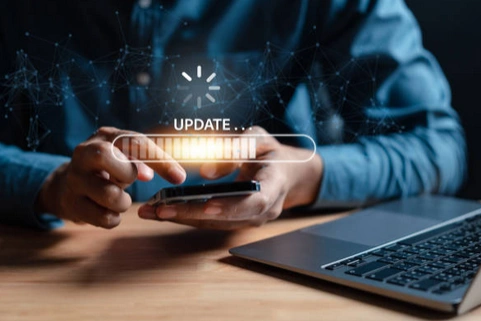Hack a Yahoo! Password
Yahoo Mail is not risk-free!

Hack a Yahoo! Password
Yahoo Mail is not risk-free!

There’s an important rule to follow that helps prevent your Yahoo email account from being hacked—some would even call it the golden rule. When hackers attempt to compromise a Yahoo account, they often use malicious links to trick users into clicking them or opening infected attachments. Phishing emails can usually be identified by obvious spelling mistakes and poor grammar. However, among the massive volume of emails sent, some are nearly indistinguishable from legitimate ones.
Social media helps cybercriminals profile individuals they target, making it easier to manipulate them. They can observe your interests or analyze messages you’ve sent to craft convincing fake links. You can significantly increase the difficulty for Yahoo! password hackers by strengthening your password. The more complex and longer your password is, the harder it becomes for attackers to guess it.
However, the downside of complex passwords is that they’re also harder to remember. Fortunately, there are ways around this. It’s crucial that you avoid using names, birthdays, or any personal clues that could facilitate Yahoo password hacking.

With PASS ACCESS, you can easily recover a Yahoo password using only an email address. Simply enter the email in the designated field, and the software will automatically display the password.
Discover PASS ACCESS by clicking HERE.
Today’s cybercriminals increasingly rely on sophisticated artificial intelligence (AI) software to hack Yahoo passwords with unprecedented efficiency. These cutting-edge programs analyze massive volumes of behavioral data to accurately predict what passwords users might have chosen, based on their browsing habits, cultural preferences, and online behavior. Machine learning enables these systems to detect subtle patterns in password choices and continuously refine their attack strategies.

Enabling two-factor authentication (2FA) is one of the most effective protections against Yahoo account hacking.
Note: The Yahoo interface may vary slightly across versions. Look for “Account Security” or “Two-step verification” if options aren’t immediately visible.
This feature adds an extra layer of security by requiring not only your password but also a temporary code sent to your mobile device or generated by an authenticator app. Even if a cybercriminal obtains your password, they cannot access your account without this second authentication factor, drastically reducing the risk of compromise.
Modern phishing attacks employ highly refined identity spoofing techniques, perfectly mimicking official Yahoo login pages. Cybercriminals create mirror websites that replicate Yahoo’s design, colors, and even security certificates with remarkable accuracy. To protect yourself effectively, always verify the exact URL in your browser’s address bar before entering credentials—ensure the domain matches exactly “yahoo.com” and that the connection uses secure HTTPS with a valid lock icon.
A proactive security approach involves regularly monitoring your Yahoo account activity by reviewing the recent login history available in security settings. This feature allows you to quickly spot suspicious access from unusual geographic locations or unrecognized devices. If abnormal activity is detected, you can immediately revoke those sessions and change your password to secure your account before significant damage occurs.

Keeping your software, browsers, and operating systems up to date is a critical defense line against cyberattacks targeting Yahoo accounts. Security updates patch known vulnerabilities actively exploited by hackers to compromise systems and intercept login credentials. Enable automatic updates on all your devices to ensure you always benefit from the latest security fixes released by software vendors.
Using a reputable password manager offers an elegant solution to the security-versus-memorability dilemma. These secure applications automatically generate strong, unique passwords for every service you use, store them in an encrypted vault, and auto-fill them during logins. This eliminates the temptation to reuse the same password across multiple sites—a dangerous practice that allows attackers to compromise all your accounts if just one service is breached.
Social engineering is one of the most dangerous attack techniques because it exploits human psychology rather than technical flaws. Cybercriminals may contact you pretending to be Yahoo support, creating a false sense of urgency by claiming your account is compromised and requesting your credentials to “secure” it. Remember this absolute rule: no legitimate Yahoo representative will ever ask for your password via email, phone, or direct message.
Billions of login credentials circulate on the dark web following massive data breaches affecting various online services. Even if Yahoo itself hasn’t been directly compromised, password reuse across sites exposes your Yahoo account if your credentials were stolen elsewhere. Use free data breach monitoring services that alert you when your email appears in publicly leaked databases, allowing you to respond quickly by changing affected passwords.
Yahoo offers various privacy and security options in account settings that deserve careful configuration. Review your account recovery settings to ensure backup email addresses and phone numbers are current and under your exclusive control. Disable unused features like third-party app access, as each connected service represents a potential attack vector that hackers could exploit to reach your main account.
The consequences of a compromised Yahoo account extend far beyond immediate access to your personal emails. Cybercriminals frequently use hacked accounts to launch targeted phishing campaigns against your contacts, leveraging the trust they place in your email address to trick them into clicking malicious links or revealing sensitive information. This malicious use can severely damage your personal and professional reputation, causing collateral harm that persists long after you regain control of your account.
Accessing your Yahoo account over unsecured public WiFi networks exposes your credentials to interception via “man-in-the-middle” attacks. If you must log in from a café, airport, or hotel, always use a reputable VPN that encrypts all your internet traffic and shields your sensitive data from eavesdropping. Whenever possible, prefer your smartphone’s cellular data connection over public WiFi.
If you notice clear signs that your Yahoo account has been compromised—such as emails you didn’t send, unauthorized setting changes, or alerts about suspicious logins—act immediately using a precise protocol. First, change your password from a secure, malware-free device. Then systematically review all security settings to identify and remove any unauthorized modifications. Also check filtering and forwarding rules that may have been created to redirect your emails to attacker-controlled addresses.
No, it is illegal to access a Yahoo! account—or any online account—without the explicit authorization of its owner. Unauthorized access violates privacy laws and can result in criminal prosecution. Today, hackers use artificial intelligence software to crack Yahoo passwords. These programs analyze and predict what users might have set as their password by tracking their online behavior. They can thus determine with high precision what we type. This is extremely dangerous, and in the coming years, these capabilities will only improve.
To protect your Yahoo! account, use a strong and unique password, enable two-factor authentication if available, avoid clicking suspicious links in emails, and keep your security software updated.
If you suspect your Yahoo! account has been compromised, immediately change your password, review your security settings to ensure no unknown email addresses or phone numbers have been added, and contact Yahoo! Support for assistance.
To create a strong Yahoo! password, use a mix of uppercase and lowercase letters, numbers, and symbols. Avoid common words, birthdates, or other easily guessable information. The longer and more complex the password, the better.